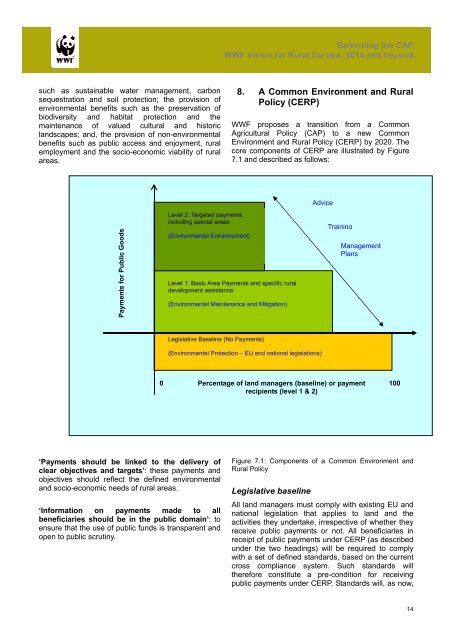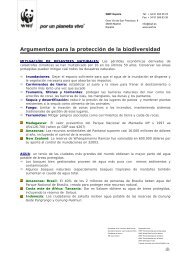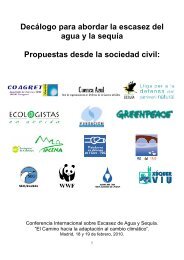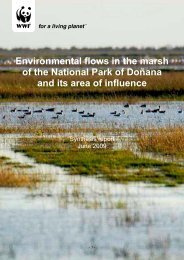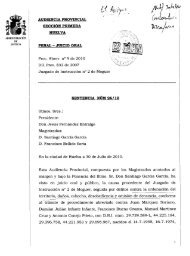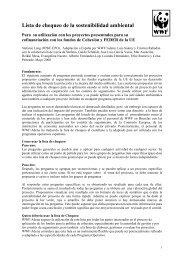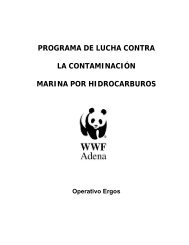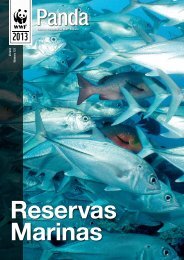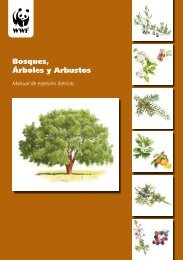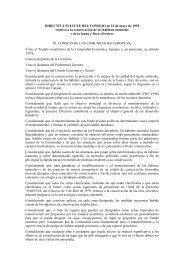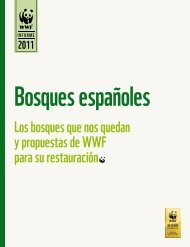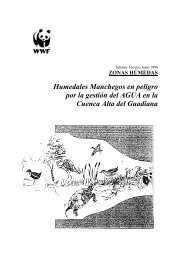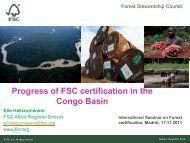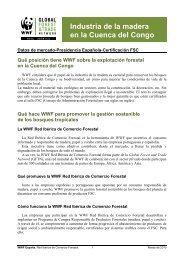Reforming the CAP WWF Vision for Rural Europe after 2013
Reforming the CAP WWF Vision for Rural Europe after 2013
Reforming the CAP WWF Vision for Rural Europe after 2013
You also want an ePaper? Increase the reach of your titles
YUMPU automatically turns print PDFs into web optimized ePapers that Google loves.
<strong>Re<strong>for</strong>ming</strong> <strong>the</strong> <strong>CAP</strong><br />
<strong>Re<strong>for</strong>ming</strong> <strong>the</strong> <strong>CAP</strong><br />
<strong>WWF</strong> <strong>Vision</strong> <strong>for</strong> <strong>Rural</strong> <strong>Europe</strong>: 2014 and beyond<br />
<strong>WWF</strong> <strong>Vision</strong> <strong>for</strong> <strong>Rural</strong> <strong>Europe</strong> <strong>after</strong> <strong>2013</strong><br />
such as sustainable water management, carbon<br />
sequestration and soil protection; <strong>the</strong> provision of<br />
environmental benefits such as <strong>the</strong> preservation of<br />
biodiversity and habitat protection and <strong>the</strong><br />
maintenance of valued cultural and historic<br />
landscapes; and, <strong>the</strong> provision of non-environmental<br />
benefits such as public access and enjoyment, rural<br />
employment and <strong>the</strong> socio-economic viability of rural<br />
areas.<br />
8. A Common Environment and <strong>Rural</strong><br />
Policy (CERP)<br />
<strong>WWF</strong> proposes a transition from a Common<br />
Agricultural Policy (<strong>CAP</strong>) to a new Common<br />
Environment and <strong>Rural</strong> Policy (CERP) by 2020. The<br />
core components of CERP are illustrated by Figure<br />
7.1 and described as follows:<br />
Payments <strong>for</strong> Public Goods<br />
Level 2: Targeted payments<br />
including special areas<br />
(Environmental Enhancement)<br />
Level 1: Basic Area Payments and specific rural<br />
development assistance<br />
(Environmental Maintenance and Mitigation)<br />
Advice<br />
Training<br />
Management<br />
Plans<br />
Legislative Baseline (No Payments)<br />
(Environmental Protection – EU and national legislations)<br />
0 Percentage of land managers (baseline) or payment<br />
recipients (level 1 & 2)<br />
100<br />
‘Payments should be linked to <strong>the</strong> delivery of<br />
clear objectives and targets’: <strong>the</strong>se payments and<br />
objectives should reflect <strong>the</strong> defined environmental<br />
and socio-economic needs of rural areas.<br />
‘In<strong>for</strong>mation on payments made to all<br />
beneficiaries should be in <strong>the</strong> public domain’: to<br />
ensure that <strong>the</strong> use of public funds is transparent and<br />
open to public scrutiny.<br />
Figure 7.1: Components of a Common Environment and<br />
<strong>Rural</strong> Policy<br />
Legislative baseline<br />
All land managers must comply with existing EU and<br />
national legislation that applies to land and <strong>the</strong><br />
activities <strong>the</strong>y undertake, irrespective of whe<strong>the</strong>r <strong>the</strong>y<br />
receive public payments or not. All beneficiaries in<br />
receipt of public payments under CERP (as described<br />
under <strong>the</strong> two headings) will be required to comply<br />
with a set of defined standards, based on <strong>the</strong> current<br />
cross compliance system. Such standards will<br />
<strong>the</strong>re<strong>for</strong>e constitute a pre-condition <strong>for</strong> receiving<br />
public payments under CERP. Standards will, as now,<br />
14


